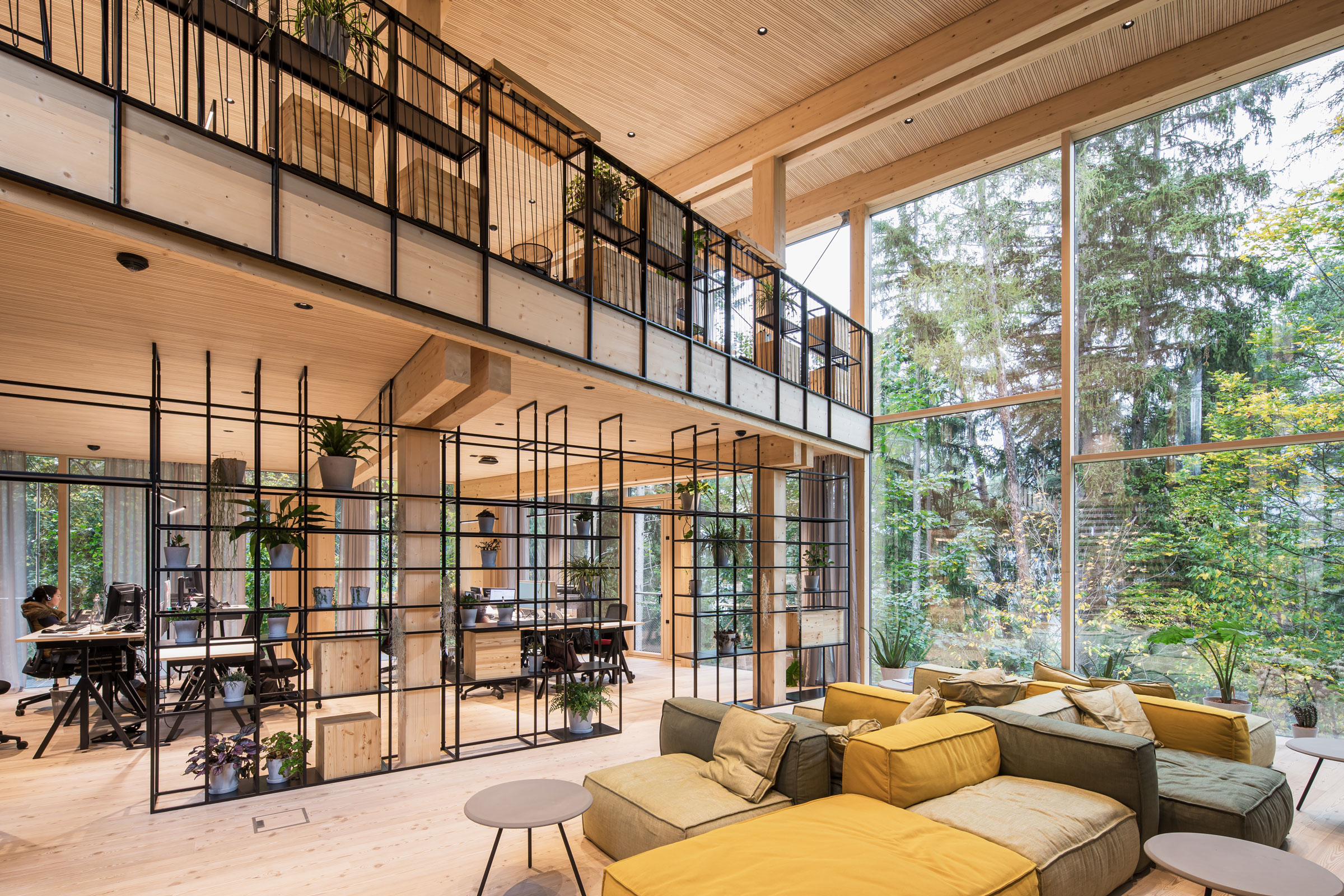Story at a glance:
- Snøhetta used wood timber in this open office space to meet sustainability goals and reflect the client’s adventurous spirit.
- A complex rainwater collection system creates a verdant facade, contributing to local biodiversity.
- Yakisugi, a traditional Japanese wood treatment, makes the facade waterproof, insect-protected, and durable without the need for painting.
When international outdoor adventure company ASI Reisen needed a new head office in Austria, they turned to Norwegian architecture firm Snøhetta to make it happen. The new, lush open office is overwhelmingly made of wood—a reflection of the company’s working culture and commitment to sustainable trekking experiences all over the world.
ASI Reisen’s new timber building is in Natters, just south of Innsbruck in Austria, and was built around an open office concept to ensure a low environmental footprint for the long-term.
Surrounded by trees and a lush green lawn, the four-story timber structure combines timber frame construction with solid wooden elements to optimize material use and allow for the greatest number of open floor plans. The building also uses a sustainable energy concept that’s based on a combination of high- and low-tech solutions.
“With its resource-saving timber construction and sophisticated sustainable energy concept, the new ASI headquarters marks an inspiration for responsibly constructing our homes and office spaces for the future. At the same time, the new office space offers a pleasant and modern working atmosphere for its employees,” says Patrick Lüth, managing director of Snøhetta’s studio in Innsbruck, in a press release.
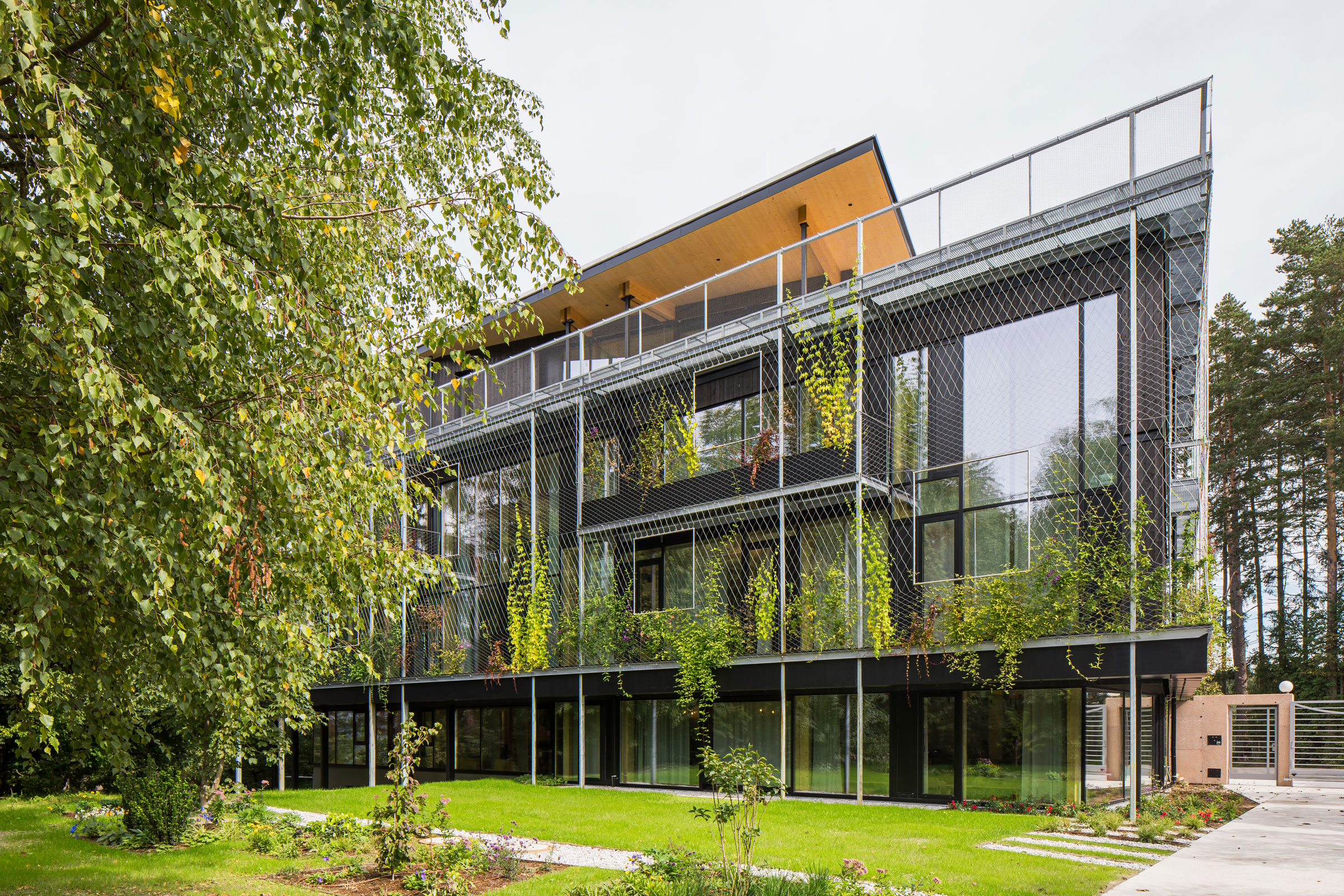
Rainwater from the roof is collected in an underground cistern and feeds the automatic irrigation system for the plants on the facade and the garden. Together with the 1,215 new plants in the open space consisting of 73 local species, the green facade also contributes to local biodiversity. Photo by Christian Flatscher
Climbing plants create a green curtain on a metal frame over the blackened wooden facade, making the building blend in with its forest surroundings. This “curtain,” made of 17 warm weather and evergreen species growing in big planters, also provides a shield from glare and shades the glass surfaces. On the western side, employees use this metal frame as a balcony. More than 100 climbing plants change the appearance of the facade throughout the year. The microclimate created by this green buffer zone reduces the energy required for cooling the building.
A traditional Japanese method of wood preservation, called yakisugi, was used on the facade. Slightly charred and thus carbonized, the facade is both waterproof and durable without the need for further painting, while also protecting against insects. The basement and the building core are made of reinforced concrete. Wood was also used for the mullion-transom-facade, windows, floors, and acoustic panels.
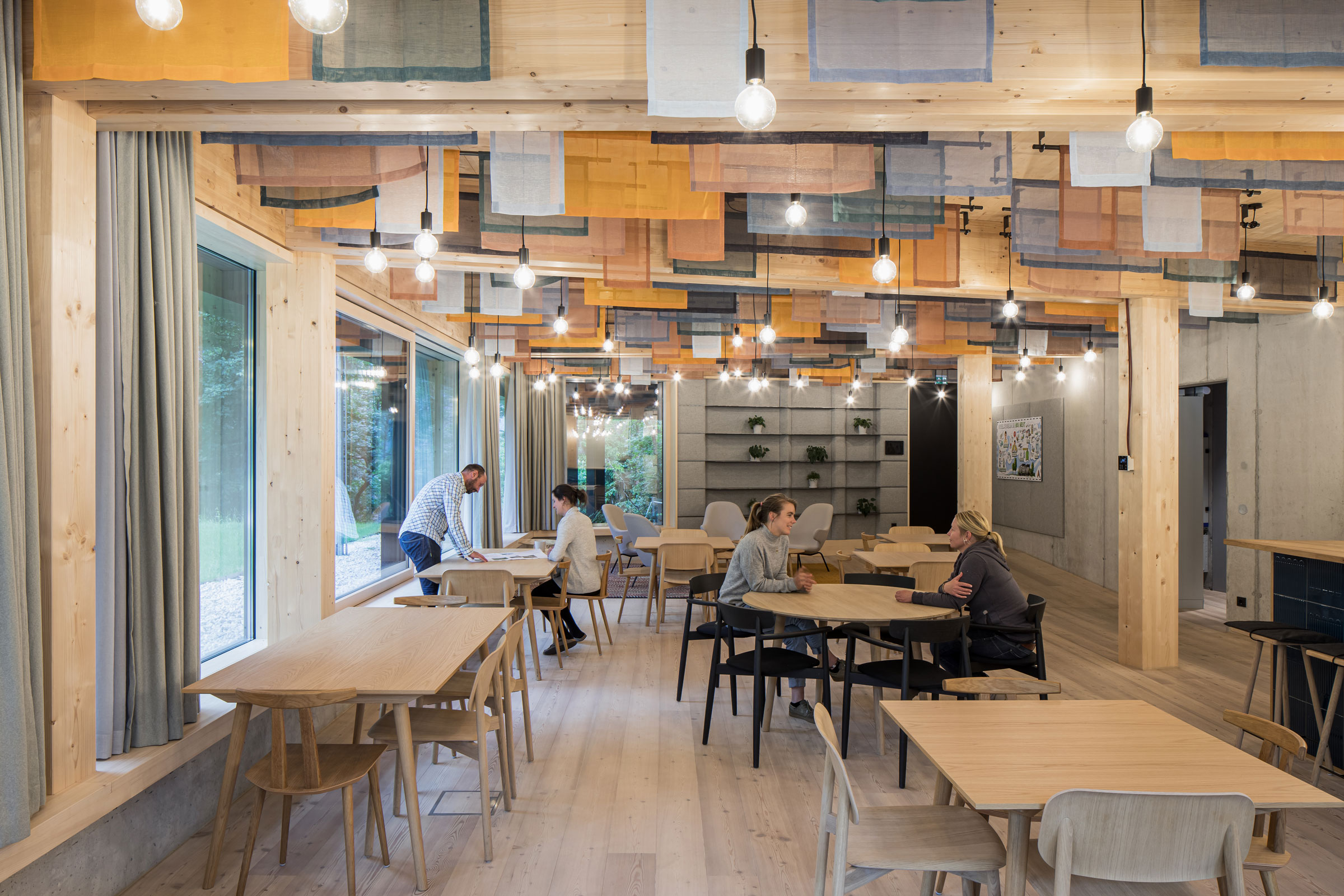
Photo by Christian Flatscher
The open office is designed for ASI Reisen’s 65 employees but can be adapted as needed. Gallery spaces create flexible office space, including individual workplaces and communal areas. Generous glass surfaces offer panoramic views of the surrounding mountains and forests, and a large staircase and double-height foyer create a welcoming space for visitors.
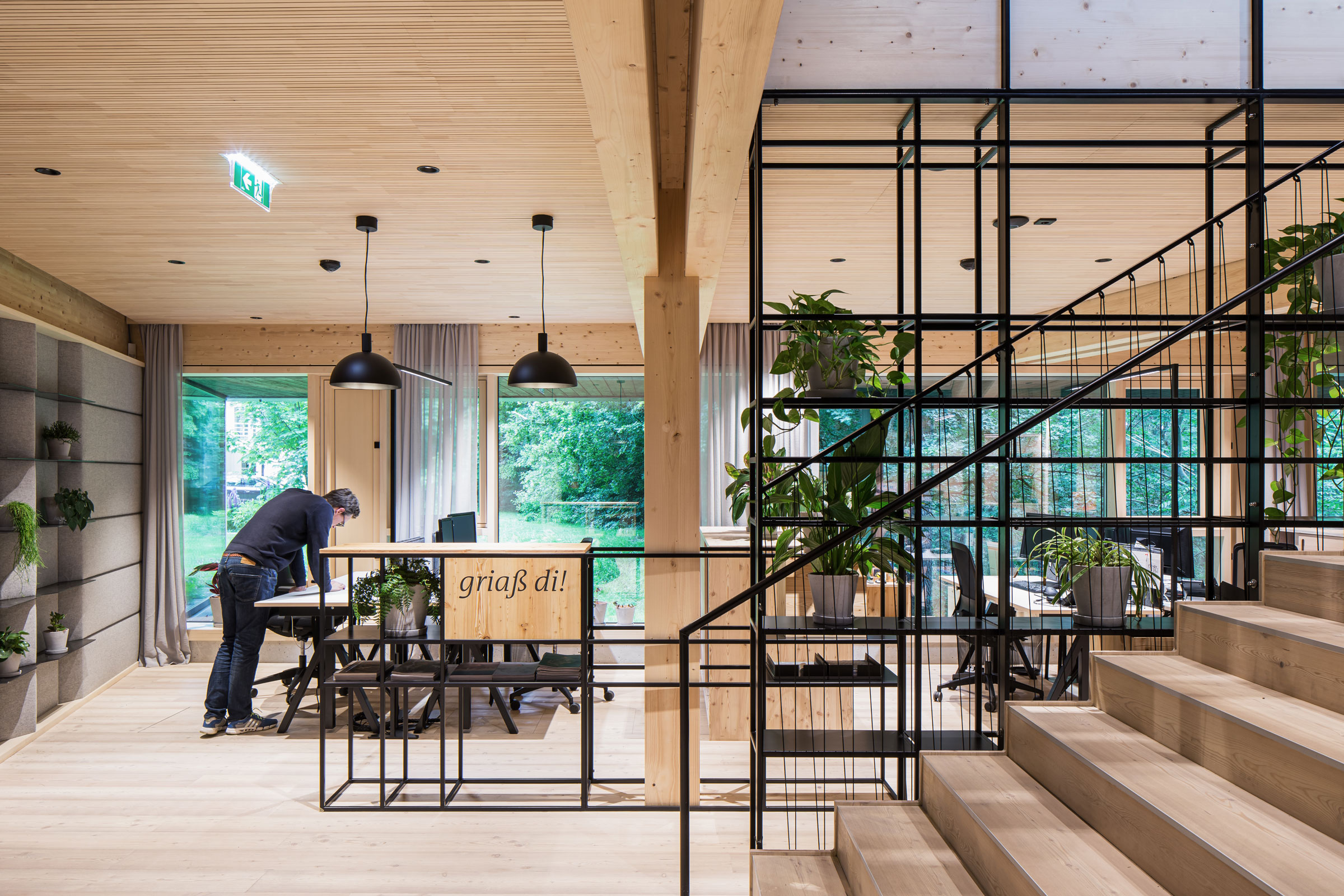
Photo by Christian Flatscher
Light timber contributes to the bright and welcoming atmosphere of the building’s interior, and amenities like a relaxation room, cafeteria, showers, and changing rooms round out the employee-friendly workplace. Shelves overflowing with plants provide a visually pleasing subdivision of different working zones and offer storage space as well as informal workspaces for reading and writing. A bridge connects the new building with an existing building that includes meeting and relaxation rooms.
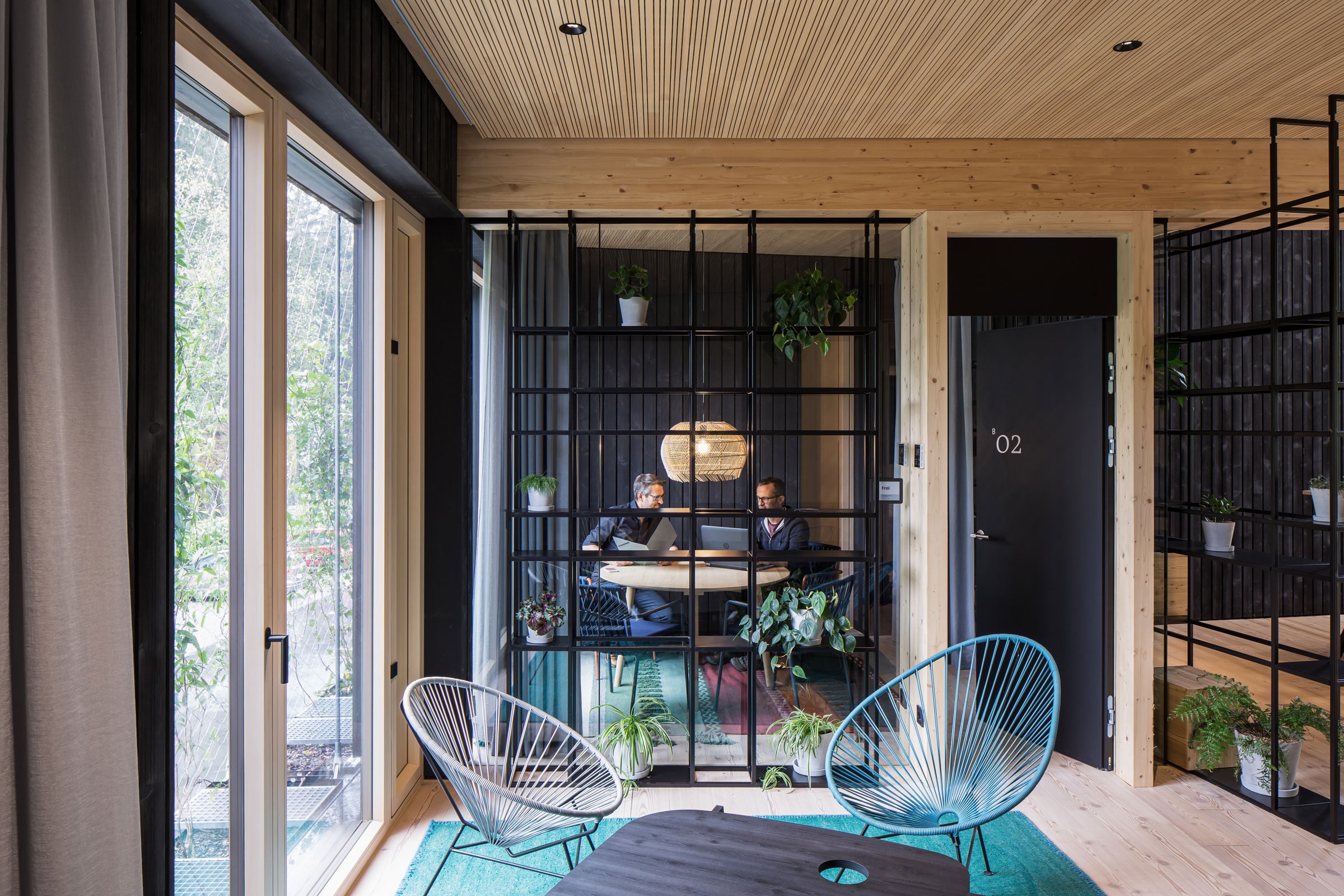
Photo by Christian Flatscher
To achieve optimal results, the energy concept was tested and adapted using a thermal-dynamic building simulation. A reversible air-water heat pump system (40 kW) heats and cools the building via underfloor heating or cooling. Sensors measuring room temperature, humidity, CO2, and wind, control the natural ventilation using thermal lift and wind pressure conditions to circulate fresh air through the building. The constantly monitored room climate then regulates how wide and how long the ventilation flaps are open. The roof is covered with PV panels, and the electricity generated partly covers the power consumption of the building.
Project: ASI Reisen office Location: Natters, Austria Completion: 2019 Site Area: 2,027 square meters Built-up Area: 347 square meters Gross Floor Area: 1,548 square meters Floor Area: 1,389 square meters Architect: Snøhetta Structural Engineer: Tragwerkspartner HVAC: Alpsolar Klimadesign

